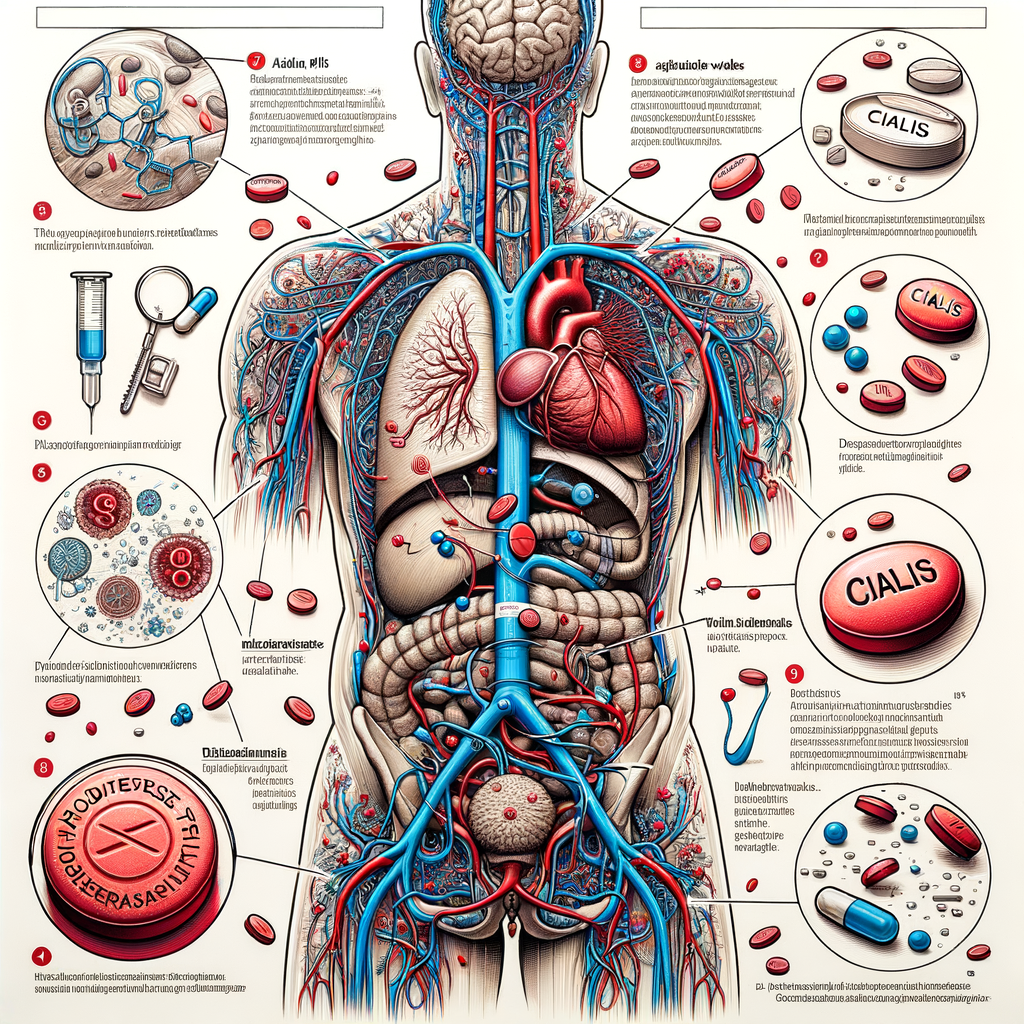- Understanding How Cialis Works
- Mechanism of Action: Cialis at Work
- Active Ingredient in Cialis
- Unique Features of Cialis
- Dosage and Timing
- Side Effects and Precautions
- FAQs on How Cialis Works
- Conclusion
Understanding How Cialis Works
Cialis is a popular medication known for its effectiveness in treating erectile dysfunction (ED) in men. The mechanism behind how Cialis works is fascinating and plays a key role in its ability to help men achieve and maintain erections. Understanding the effortless mechanism of Cialis can provide valuable insights into its function and efficacy.
Mechanism of Action: Cialis at Work
When a man experiences sexual arousal, the brain sends signals to the nerves in the penis to release nitric oxide. This chemical messenger then activates an enzyme known as guanylate cyclase, leading to increased levels of cyclic guanosine monophosphate (cGMP) in the smooth muscle cells of the penis. The elevated cGMP levels cause the blood vessels in the penis to relax and widen, allowing for increased blood flow.
Active Ingredient in Cialis
The active ingredient in Cialis is tadalafil, a PDE5 inhibitor. PDE5 is an enzyme that breaks down cGMP, thereby reducing the amount available for smooth muscle relaxation in the penis. By inhibiting the action of PDE5, tadalafil helps maintain higher levels of cGMP, promoting prolonged muscle relaxation and vasodilation, which are crucial for achieving and sustaining an erection.
Unique Features of Cialis
One of the key advantages of Cialis over other ED medications is its prolonged duration of action. While other similar medications typically last for 4-6 hours, Cialis can remain effective for up to 36 hours. This longer window of efficacy has earned Cialis the moniker “the weekend pill,” as it allows for greater spontaneity in sexual activity without the need to time the dose closely to sexual encounters.
Dosage and Timing
Cialis is available in various dosages, with the most common being 10mg and 20mg tablets. It is essential to follow the prescribed dosage and timing instructions provided by a healthcare professional to ensure optimal results. Typically, Cialis is taken about 30 minutes before sexual activity, but some individuals may experience the effects sooner.
Side Effects and Precautions
Like any medication, Cialis can potentially cause side effects in some individuals. Common side effects may include headaches, indigestion, muscle aches, and back pain. It is important to consult a healthcare provider before starting Cialis to determine if it is suitable for you, especially if you have underlying medical conditions or are taking other medications that may interact with tadalafil.
FAQs on How Cialis Works
1. Is Cialis a Cure for Erectile Dysfunction?
No, Cialis is not a cure for erectile dysfunction; it is a treatment that helps manage the symptoms of ED.
2. How Quickly Does Cialis Start Working?
Cialis typically begins working within 30 minutes to an hour after ingestion, with peak effectiveness reached within 2 hours.
3. Can Cialis Cause Priapism (Prolonged Erections)?
While rare, priapism can occur as a side effect of Cialis. It is crucial to seek immediate medical attention if an erection lasts longer than 4 hours.
4. Can Cialis Be Taken Daily?
For some individuals, a lower daily dose of Cialis may be prescribed for continuous use. However, it is essential to follow your healthcare provider’s guidance.
5. Does Cialis Require Sexual Stimulation to Work?
Yes, sexual arousal is necessary for Cialis to be effective. It does not induce an automatic erection but enhances the body’s response to stimulation.
6. Are There Food Interactions with Cialis?
Cialis can be taken with or without food, but excessive alcohol consumption should be avoided, as it can increase the likelihood of side effects.
7. Is Cialis Safe for Everyone to Use?
Cialis may not be suitable for individuals with certain medical conditions such as heart problems or those taking specific medications. Consult a healthcare provider for personalized advice.
8. How Long Does Cialis Stay in the Body?
Cialis has a half-life of about 17.5 hours, meaning it can remain in the body for up to 36 hours after ingestion.
9. Can Cialis Help with BPH (Enlarged Prostate)?
Cialis is also approved for the treatment of benign prostatic hyperplasia (BPH) and can help improve urinary symptoms associated with the condition.
10. What Should I Do If Cialis Does Not Work for Me?
If you do not experience the desired effects with Cialis, consult your healthcare provider to explore other potential treatment options.
Conclusion
In conclusion, understanding how Cialis works involves recognizing its role in enhancing the body’s natural processes to facilitate erections in men with erectile dysfunction. The effortless mechanism of Cialis, coupled with its long-lasting effects and relative safety profile, has made it a popular choice among individuals seeking treatment for ED. By following dosage instructions, considering potential side effects, and consulting healthcare providers as needed, individuals can effectively harness the benefits of Cialis for improved sexual function.
References:
1. National Institute of Diabetes and Digestive and Kidney Diseases. Erectile Dysfunction
2. Mayo Clinic. Tadalafil (Oral Route)
3. U.S. Food and Drug Administration. Cialis (tadalafil) Tablets


